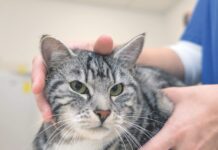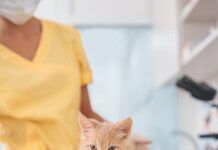As we know, no two cats are alike. They come in all shapes and sizes, each one with its own personality, as well as its own little habits that endear (or infuriate, as the case may be) its caregiver. Our feline companion is unique, aging in its distinctive way. And as it ages, it is important for caregivers to recognize changes that may require special nutritional needs for their geriatric companion.
Tony Buffington, DVM, professor of nutrition at The Ohio State University College of Veterinary Medicine, explains that nutritional needs do change as a cat matures but advises, few studies have investigated the nutrient needs of cats during the last quarter of their life. He says that until further information is available, only tentative recommendations can be offered beyond sound general advice based on a diet history, a physical examination, and diagnostic testing, as appropriate.
Becoming a geriatric patient
Many cats begin to encounter age-related physical changes between seven and 10 years of age, and most do so by the time they are age 12. The commonly held belief that every cat year is worth seven human years is not accurate. In reality, a one-year-old cat is physiologically similar to a 16-year-old human, and a two-year-old cat is like a person of 21 years of age. For every year thereafter, each cat year is worth about four human years. Using this formula, a ten-year-old cat is similar age-wise to a 53-year-old person, a 12-year-old cat to a 61-year-old person, and a 15-year-old cat to a person of age 73.
Monitoring intake
A diet history will reveal changes in a cats eating patterns, which may be a red flag that should be addressed. Buffington says the person who feeds the cat should provide the diet history, which must include:
1. What does the cat eat? Provide sufficient detail (brand, form, and flavor).
2. How much is consumed? State in standard unit of measure. A cup may mean an 8-ounce measuring cup to the clinician and a 12-ounce drinking cup to the client.
3. The feeding schedule should be outlined. Is free feeding encouraged or is food set out at a specific time? Or is it a combination of the two?
4. Are treats and supplements given? If so, identify what kind are given and how often.
5. Spell out the quality of the cats appetite: Is it ravenous, excellent, good, fair, or poor?
6. Identify any recent changes in any of the above, and explain why, if known.
Nutritional assessment
A quick way to calculate approximately whether your cat is getting enough nutrition is to check its protein intake. Do this by multiplying the grams of food it eats in a day by the percent protein on the label. You can do this by weighing it or by assuming that one cup of food weighs 100 grams and correcting for the amount eaten (the weight of canned foods is written on the can). Most cats should eat at least 1.5 grams/pound per day, although Buffington prefers at least two grams per pound per day. If the label says that crude protein is 34 percent of the diet, 50 grams times 34 percent = 17 grams per day divided by 10 pounds (weight of cat) is 1.7 grams per pound per day. This is quite close to the minimum, which could result in loss of protein reserves and body condition in some cats. If protein intake is adequate, intake of other nutrients should be all right if a nutritionally balanced and complete diet is fed.
Ensuring adequate intake
There is no evidence that geriatric diets are necessary if the cat is healthy and consumes a satisfactory diet, says Buffington. However, certain changes take place as a cat ages, and these changes may create the need for nutritional intervention. Senior cats usually become less active and therefore require fewer calories; their sense of smell may weaken, causing them to eat less than they need to stay healthy; and with age comes an increased risk of getting certain diseases.
Although age is not a disease, says Buffington, it is true that the risk of many diseases increases as animals age. Buffington says a recent survey found that the most common health problems of geriatric cats include oral disease, chronic renal failure, weight loss, heart murmur, hyperthyroidism, tumor, and diabetes mellitus.
Monitor the food intake of geriatric cats to ensure adequate nutrient intake, Buffington says. Monitoring food intake will also provide an early warning system for health problems since decreased food intake is a common early sign of disease.



